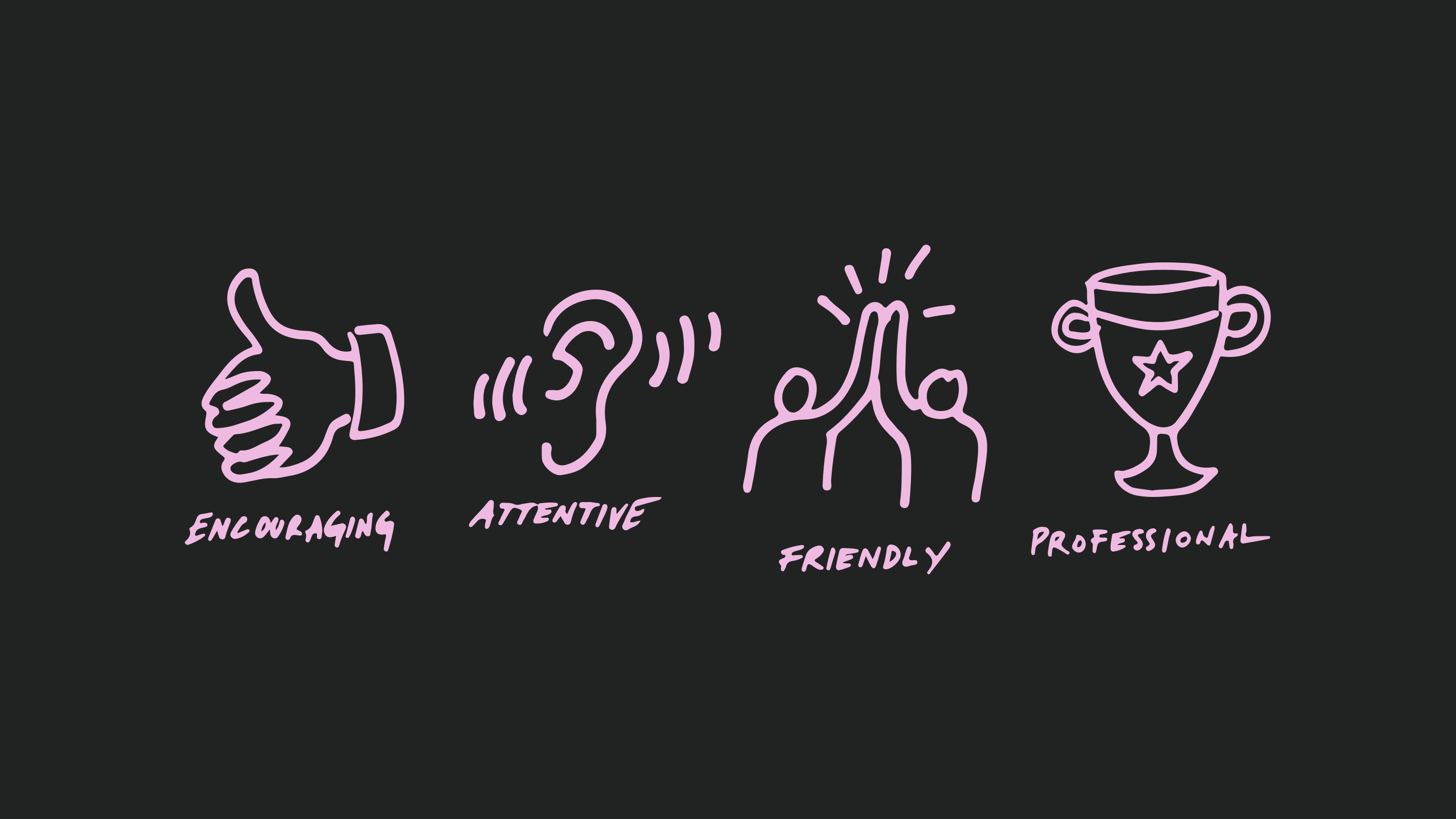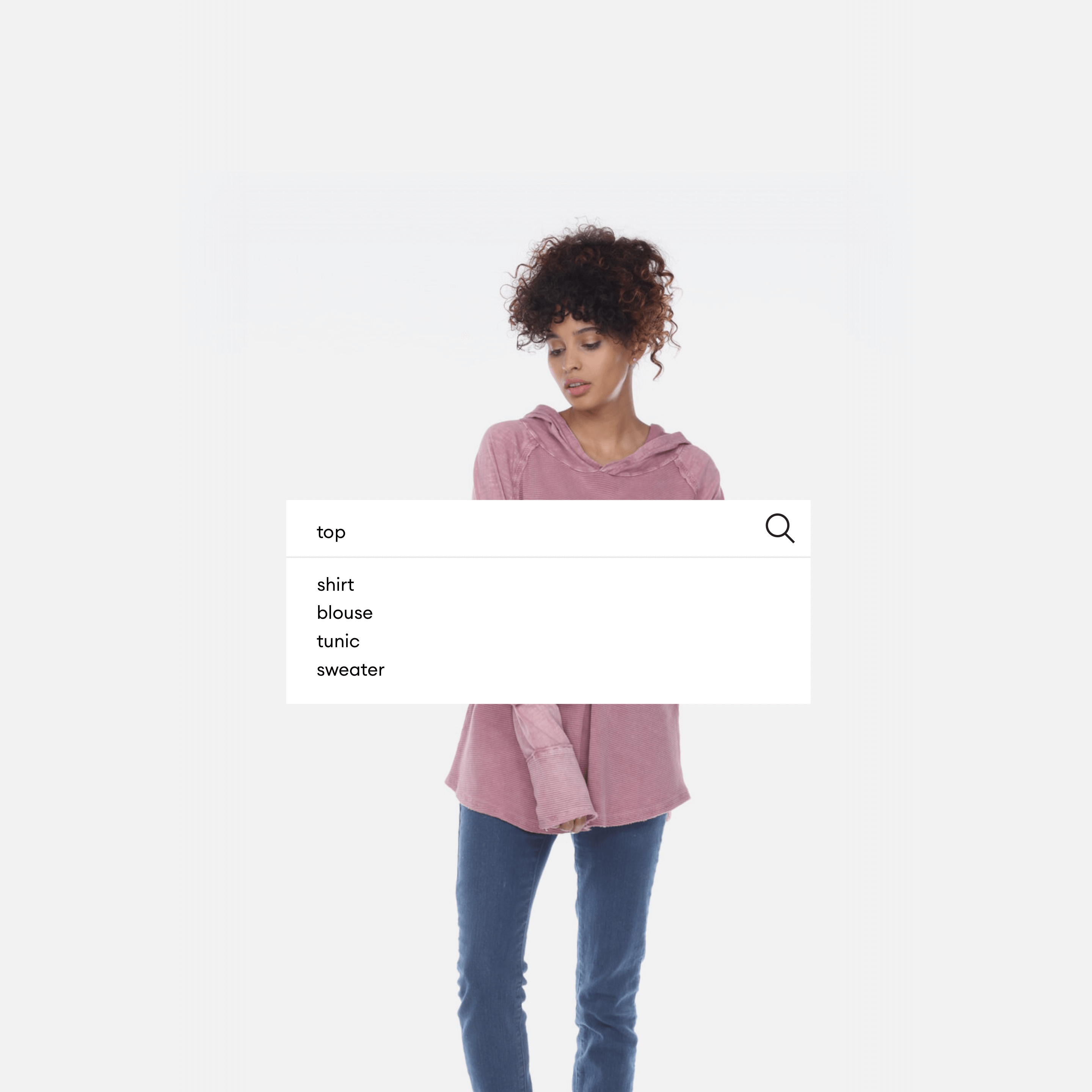Voice is an essential part of any brand. But before we dive into why it matters—let’s get clear on what a brand voice is. A brand voice defines how you sound to external audiences. It stipulates the things you would and wouldn’t say and how you use punctuation and sentence structure. It also sets a tone that helps you connect with your target audience.

Are you a pot-stirring potty mouth like Bird Dogs? Do you lean on flowery, descriptive language to create a sense of whimsy like Christy Dawn? Or maybe you turn to short, quippy Millennial-isms to create a casual and playful tone, à la Glossier)?
Before a brand voice can take shape, first comes a brand personality. By honing in on four or five distinct personality traits, a fully-formed character begins to emerge. These traits are always human attributes. When we help our clients develop a brand personality, we ask them to think of their brand as a human and consider how someone would describe them after meeting them at a party. These traits can be anything from witty and caring to sassy and precise. Once we’ve zeroed in on a personality, its traits inform both the development of a visual identity and a brand voice—how you look and how you sound to your audience.
But why does it matter if you have a brand voice or not? Below, we break down four reasons why a clearly-defined and consistently-executed brand voice matters as much as your logo, brand colours and name.
1. It Builds Trust
Consistency creates trust. When you bring the same voice to life on each one of your channels, your brand feels reliable—no matter where your customers are interacting with you. A maintained, specific brand voice is an essential tool in your customer retention arsenal, helping you win loyalty and convert one-time customers into lifelong fans of your brand. That’s why it’s so important that your voice feels consistent, from your subject lines to your window displays to your help centre articles.
Growing your team? A voice guide is especially helpful if multiple people will be writing on behalf of your brand, as it gives everyone a clear set of rules to help execute the voice consistently. After all, we’re only human—we’re likely to bring our own voice into our writing if we aren’t given clear do’s and dont’s.
2. It Amplifies Your Visual Identity
The look and feel of your brand should be in lockstep with your brand voice. This guarantees you’re communicating a recognizable brand—whether someone is looking at one of your photos or reading about you.


Take the luxury fitness club Equinox, for example. Their typography, photography, and colour choices are confident and bold—like these images from their in-your-face campaigns. In the same vein, the words they choose mirror this bold, no-nonsense personality. The result is a brand that feels deeply considered, giving you confidence in who they are and what they care about.
3. It Helps Differentiate You From Competitors
There’s a good chance you’re competing for customers with other brands in your category. In the battle to capture the attention of new customers—your voice can be your competitive edge. Sounding distinct from other brands makes you memorable and helps you stand out in a crowded arena. Some brands that do this well?


Footwear brand Allbirds has a friendly and cheeky voice that makes it fun to learn about sustainable fibres, whereas wardrobe essentials brand Entire World leans on dry humour to put an entertaining spin on their understated line.
4. It Acts as a Virtual Salesperson
One place we see brand voice routinely under-utilized? Product description pages (PDPs). Your PDPs are precious real estate. Just like a salesperson, PDPs sell customers on the features, functionality and story behind your products. They also have to pull more weight—since on ecomm, customers can’t hold anything in their hands, test products or try features for themselves.
So where does brand voice come in? Think of your voice as a digital counterpoint to your best salesperson on the showroom floor. A well-defined brand voice helps guide a consumer, keeping them engaged as they learn the reasons why your product is the right move for them. The fact is: people want to engage with people. A brand personality that feels more like a human than a robot encourages your customers to stay on your page, retain crucial information, and ultimately convert.
Now that you know all the reasons why you need a voice, the next step is creating voice guidelines of your own.







